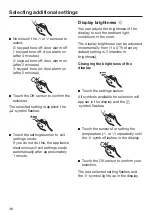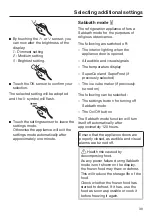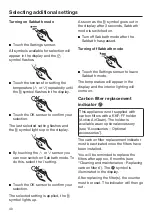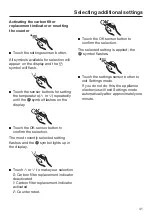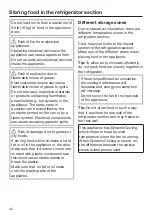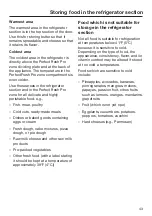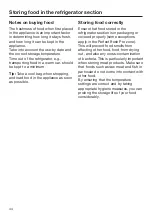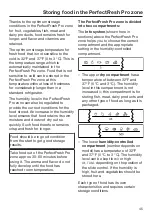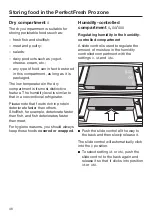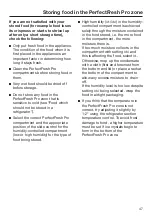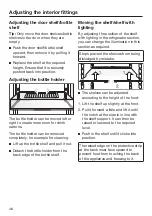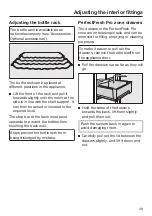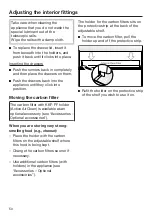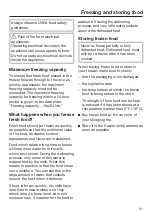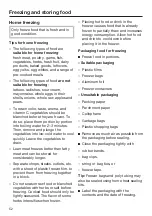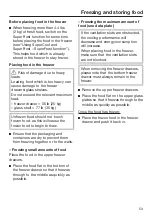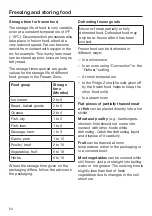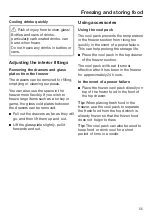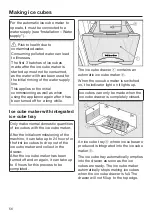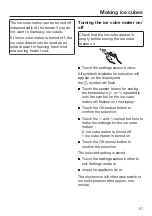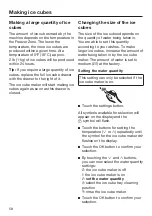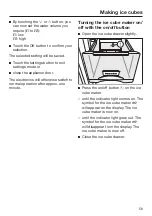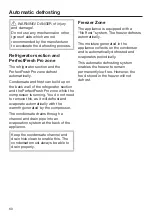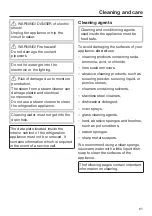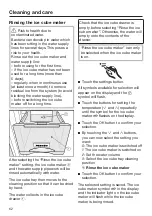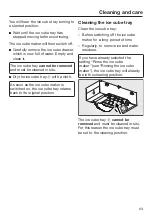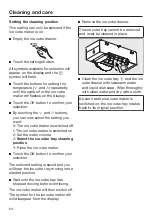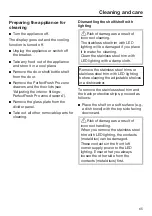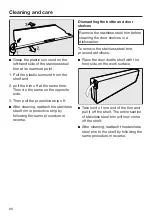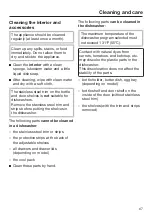
Freezing and storing food
52
Home freezing
Only freeze food that is fresh and in
good condition.
Tips for home freezing
– The following types of food are
suitable for home freezing
:
fresh meat, poultry, game, fish,
vegetables, herbs, fresh fruit, dairy
products, baked goods, leftovers,
egg yolks, egg whites, and a range of
pre-cooked meals.
– The following types of food
are not
suitable for freezing
:
lettuce, radishes, sour cream,
mayonnaise, whole eggs in their
shells, onions, whole raw apples and
pears.
– To retain color, taste, aroma, and
vitamin C, vegetables should be
blanched before they are frozen. To
do so, place them portion by portion
into boiling water for 2–3 minutes.
Then, remove and plunge the
vegetables into ice-cold water to cool
quickly. Leave the vegetables to
drain.
– Lean meat freezes better than fatty
meat and can be stored for
considerably longer.
– Separate chops, steaks, cutlets, etc.
with a sheet of plastic freezer film. to
prevent them from freezing together
in a block.
– Do not season raw food or blanched
vegetables with herbs or salt before
freezing. Cooked food should only be
lightly seasoned. The flavor of some
herbs intensifies when frozen.
– Placing hot food or drink in the
freezer causes food that is already
frozen to partially thaw and increases
energy consumption. Allow hot food
and drink to cool down before
placing it in the freezer.
Packaging food for freezing
Freeze food in portions.
– Suitable packaging
– Plastic films
– Freezer bags
– Aluminum foil
– Freezer containers
– Unsuitable packaging
– Packing paper
– Parchment paper
– Cellophane
– Garbage bags
– Plastic shopping bags
Remove as much air as possible from
the packaging before sealing.
Close the packaging tightly with
– rubber bands,
– bag clips,
– string or bag ties, or
– freezer tape.
Tip:
Freezer bags and poly tubing may
also be sealed using home heat sealing
kits.
Label the packaging with the
contents and the date of freezing.
Summary of Contents for KFNS 37692 iDE-1
Page 118: ......

